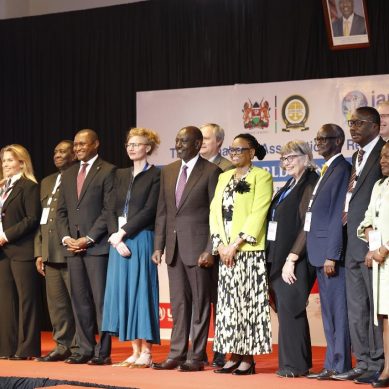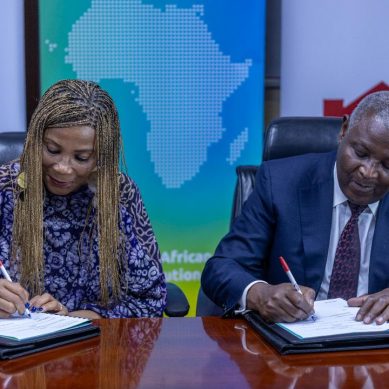
When I started writing on belonging some Ugandans nicknamed me “Man of Belonging”. What they did not know is that I am a professional conservation biologist that was trained to conserve the world’s biological elements and their interconnections, and to manage the environment and train others to do the same.
Indeed, I have trained many but the acquisitive culture has sucked many in and only a few can stand to be counted as still committed to the cause. Many who have become policy-makers and policy implementers make exploitative policies and implement them at the expense of the conservation enterprise and the total environment.
I have watched in dismay how indigenous Ugandans, animals and plants are losing their natural belonging as a result of conservation and environmentally-unconscious policies when the choice of the rulers are commercialism and the sucking everyone into the money economy. We have lost far natural belonging, ecosystems, habitats animals and plants in the last 40 years than in the previous 40 years. Humanity has lost its biocultural landscape to commercialisation and the money economy, and by extension, its diverse identities. Without belonging, identify, which is superior to interests, disappears.
When humans lose their natural belonging and identity to sterile interest, they become the latter-day nomads, roaming the biocultural landscape but unattached to it because the sterile interests and their agents have dispossessed them of their belonging and displaced them from the biocultural landscape to advance themselves. This is the price of emphasising commercialisation and money economy at the expense of the environment and conservation.
As a professional conservation biologist, I am predisposed to protect, preserve and advocate for natural belonging, identities and sustainable futures of the diverse indigenous groups of people, animals, plants and biocultural landscapes and their ecologies. Any political or economic strategies to raise sterile, conservation and environmentally empty interests both threaten and endanger my professional field of conservation biology in time and space
This explains why I allocated so much writing time and energy addressing the concepts of natural belonging and identity. My writings have included:
- The history of Busoga and the concept of natural belonging
- The science of and threats to human natural belonging: The case of Uganda
- The unity of the different senses of belonging and their threats in Uganda.
- Land, the politics of belonging and the plot against customary land tenure in Uganda.
In this article I focus on The importance of developing and preserving a sense of belonging in the 21st century Uganda.
Implicit in this topic is the importance of developing and preserving a sense of identity. In the most general sense, we can define identity as a person’s sense of self, established by their unique – frequently – cultural and social characteristics, affiliations, and social roles.
What political, ethnic and commercial interests are seeking to achieve in our lifetime is identity disturbance, sometimes called identity diffusion. This refers to difficulties in determining who you are in relation to other people.3 Some people with identity disturbance or identity diffusion experience difficulties understanding where they end and the other people begin.
There are many types of identity:
Cultural identity refers to an individual’s sense of belonging and connection to a particular cultural group or community encompassing the shared values, traditions, customs, language, beliefs and behavioural norms that define and distinguish a specific cultural or ethnic group. Our cultural identity influences how we interpret and react to situations, so it is important that we become aware of our own identity in relation to the world around us (Victoria Wilson, 2024).
Social identities are labels that people use to categorise or identify themselves and/or others as members of specific groups. Social identity refers to the ways that people’s self-concepts are based on their membership in social groups. Examples include sports teams, religions, nationalities, occupations, sexual orientation, ethnic groups and gender. Although social identity is often talked about in terms of a single category (“either X or Y”), people actually have multiple social identities that combine together to influence our interactions (Centre for Creative Leadership, 2024).
Community identity is characteristically the collective identity that indicates the particularity and distinguishing features of the community. Creating community identity needs a learning process to assist community to identify, recognise, build acceptance and cultivate awareness in identity (Kulthida Ratanakosol, Wiratep Pathumcharoenwattana and Pan Kimpee, 2016).
Biocultural identities are understood as the intertwining of social-ecological relationships and diverse knowledges that situate characteristics within bioregional constructs (Cavaliere and Branstrator, 2023).
Ecological Identity originally comes from the work of Mitchell Thomas in his book, Becoming a Reflective Environmentalist. To express our identity each of us is going to make our own Ecological Identity tree. Developing, consciously cultivating, an ecological identity takes us on a path of self-knowledge and wisdom. Ecological identity speaks to educators but implies that we are all educators. Its concepts and innovative learning tools are adaptable to a wide range of groups and settings.
Environmental identity is defined as an aspect of one’s self-concept in relation to the natural world, as defined by Clayton (2003). According to Mitchell Thomashow (1992). Environmental identity is lodged in the real circumstances, events, and habitats of everyday life. The task for the educator is to present students with a process that enables them to integrate these experiences. “Sense of place” is a concept around which such integration occurs. Sense of place is the domestic basis of environmentalism and the source of our deepest connection to the natural world. Environmental identity is formed not only on the basis of our aesthetic and spiritual connection to the natural world, but also out of our understanding of the processes of natural resource transformation. (Mitchell Thomashow, 1992).
So, when I emphasise developing and preserving a sense of belonging, I am also emphasising developing and preserving a sense of identity in its diverse forms.
Many times, people attempting to destroy the identities of others to service their own interests jealously preserve and enhance their own identity at the expense of other’s identity. These days they conceal their intention in Development or development programmes and projects. Because the programmes and projects are targeting money and commerce, they are insensitive to the various identities of the people. And as I showed in a previous article, they have no respect for the various senses of belonging.
This article is on the importance of developing and preserving a sense of belonging. From my other articles on belonging, you have probably already concluded that belonging is indeed important and should be preserved in order to perpetuate ourselves in our different biocultural landscapes.
As Sally Boadman (2020) wrote in his article “The Importance of Developing A Sense of Belonging” a sense of belonging is crucial to our life satisfaction, happiness, mental and physical health and even longevity. It gives us a sense of purpose and meaning. Research has shown that loss of belonging has been associated with stress, illness and decreased wellbeing and depression. Without a sense of belonging, it’s easy to feel lost and alone. Which is a pretty scary place to be in this wide world, especially for our children.
Indeed, people are happy because they belong, belong to each other in their community and belong to the Earth. They become unhappy and mentally disturbed when they are disconnected from each other in their communities and from the Earth by projects and programmes that emphasise dysconnectivity rather than connectivity of people in and between communities. We have recently seen dysconnectivity when people are displaced and dispossessed by people from elsewhere of by government in grand land grabbing schemes in Uganda.
The claim by government is that it is taking land from people to establish industries to develop the country and encouraging commercialism for the same purpose. Accordingly, government is encouraging individuals, even those foreign to the land of local communities, to buy large chunks of land, thereby scattering people and forcing many to migrate to towns. As if this is not bad enough the government is compelling people to convert their customary land to freehold land. This way it is disconnecting families and individuals within their communities and reducing the power of culture over community and cultural lands.
It is important that our governors appreciate thatwe are all interconnected, and going against that natural grain by encouraging living as separate systems, is responsible for a lot of harm we are doing to ourselves, one another, country and the planet (see Sally Boardman, 2020). A country is worth its name if leaders and governors work to emphasise belonging, connectedness and inclusion rather than disconnection and exclusion. When this is the case, the country is just a collection of individuals and groups of individuals that see disunity more than unity. Calling upon them to unite becomes noise to them and just a jargon.
Promoting connectedness and/or a sense of belonging is a strategy used in addressing social exclusion. While belonging and connectedness are often used interchangeably, Crisp (2020) demonstrates that while they may be co-existent, it is equally possible to have one without the other. Hence, hence he contends that these two concepts need to be carefully distinguished by those planning and delivering social work services. Furthermore, consideration of both connectedness and belonging enables a more nuanced understanding of social exclusion which challenges the assumption that inclusion and exclusion are binary opposites, and that it is possible to be both included and excluded at the same time (Crisp, 2020).
In the end connectedness and belonging, and for that matter, inclusion must involve and all the senses of belonging: community belonging, social belonging, biocultural belonging, ecological belonging and environmental belonging. Governments seeking to deliver goods and services and to enable the citizens to experience development and transformation must create policies and strategies to institutionalise and implement all of the senses of belonging. Yes, developing and preserving the sense of belonging in all its various forms should be integral to development policies and strategies. Otherwise time, energy and money will be invested in development but no meaningful and effective development of the people will be achieved.
Such development is achieved if all development is pursued as people’s development. It is only such development that will simultaneously develop and preserve a sense of belonging, where people feel that they belong to themselves, their country, the Earth and Planet Earth. When people do not feel like this then it is de-development, not development, taking place. They are not integral to the development process pursued by the governors and leaders.
For God and my country.
- Tell report / By Oweyegha-Afunaduula / Environmental Historian and Conservationist Centre for Critical Thinking and Alternative Analysis (CCTAA), Seeta, Mukono, Uganda.
About the Centre for Critical Thinking and Alternative Analysis (CCTAA)
The CCTAA was innovated by Hyuha Mukwanason, Oweyegha-Afunaduula and Mahir Balunywa in 2019 to the rising decline in the capacity of graduates in Uganda and beyond to engage in critical thinking and reason coherently besides excellence in academics and academic production. The three scholars were convinced that after academic achievement the world outside the ivory tower needed graduates that can think critically and reason coherently towards making society and the environment better for human gratification. They reasoned between themselves and reached the conclusion that disciplinary education did not only narrow the thinking and reasoning of those exposed to it but restricted the opportunity to excel in critical thinking and reasoning, which are the ultimate aim of education. They were dismayed by the truism that the products of disciplinary education find it difficult to tick outside the boundaries of their disciplines; that when they provide solutions to problems that do not recognise the artificial boundaries between knowledges, their solutions become the new problems. They decided that the answer was a new and different medium of learning and innovating, which they characterised as “The Centre for Critical Thinking and Alternative Analysis” (CCTAA).
Further reading
Beth R Crisp (2010). Belonging, Connectedness and social exclusion. Journal of Social Inclusion, 1(2):123-132. Researchgate (2010). https://www.researchgate.net/publication/372387261_Belonging_connectedness_and_social_exclusion Visited on 27 October 024 at 13.23 pm EAT
Centre for Creative Leadership (2024). Understanding Social Identity to Lead in a Changing World. Centre for Creative Leadership, July 7 2024, https://www.ccl.org/articles/leading-effectively-articles/understand-social-identity-to-lead-in-a-changing-world/ Visited on 27 October 2024 at 11.30 am EAT
Cavaliere, C. T., & Branstrator, J. R. (2023). A Critical Biocultural Identity Framework. Society & Natural Resources, 37(2), 213–233. 16 October 2023 https://doi.org/10.1080/08941920.2023.2267499
Clayton, S. (2003). Environmental Identity: A Conceptual and an Operational Definition. In S. Clayton & S. Opotow (Eds.), Identity and the natural environment: The psychological significance of nature (pp. 45–65). MIT Press.
Kulthida Ratanakosol, Wiratep Pathumcharoenwattana and Pan Kimpee (2016). Learning Process for Creating Community Identity. SHS Web of Conferences 26, 01067 (2016) ERPA 2015, DOI: 10.1051/ shsconf/20162601067 https://www.shs-conferences.org/articles/shsconf/pdf/2016/04/shsconf_erpa2016_01067.pdf Visited on 27 October 2024 at 11.15 am EAT.
Lei, Lei. “Exploring ecological identity from the perspective of systemic functional linguistics” Journal of World Languages, vol. 7, no. 3, 2021, pp. 487-514. https://doi.org/10.1515/jwl-2021-0013 https://www.degruyter.com/document/doi/10.1515/jwl-2021-0013/html?lang=en Visited on 27 October 2024 at 12.07 pm EAT
Mitchell Thomashow (1995). Ecological Identity: Becoming a Reflective Environmentalist.. MIT Press.
Mitchell Thomashow (1992). Environmental Identity. Mindfulness Bell, Issue No 7, August 1992.
Sally Boardman (2020). The Importance of Developing a Sense of Belonging. Life Skills, 4 February 2020. https://www.lifeskillsgroup.com.au/blog/belonging Visited on 27 October 2024 at 13.11pm EAT
Silvia Scaramuzzi, Paola Scarpellini, Sara Gabellini, Claudia Ranaboldo and Giovanni Belletti (2023). enhancing territorial development based on biocultural identity: av capacity building approach. Journal of Rural Studies, Volume 104, December 2023, 103161 https://www.sciencedirect.com/science/article/pii/S0743016723002279 Visited on 27 October 2024 at 11.57 am EAT
Victoria Wilson (2024). What is Cultural Identity and Why is it Important? Exceptional Futures, https://www.exceptionalfutures.com/cultural-identity/ Visited on 27 October 2024 at 11.20 am EAT








